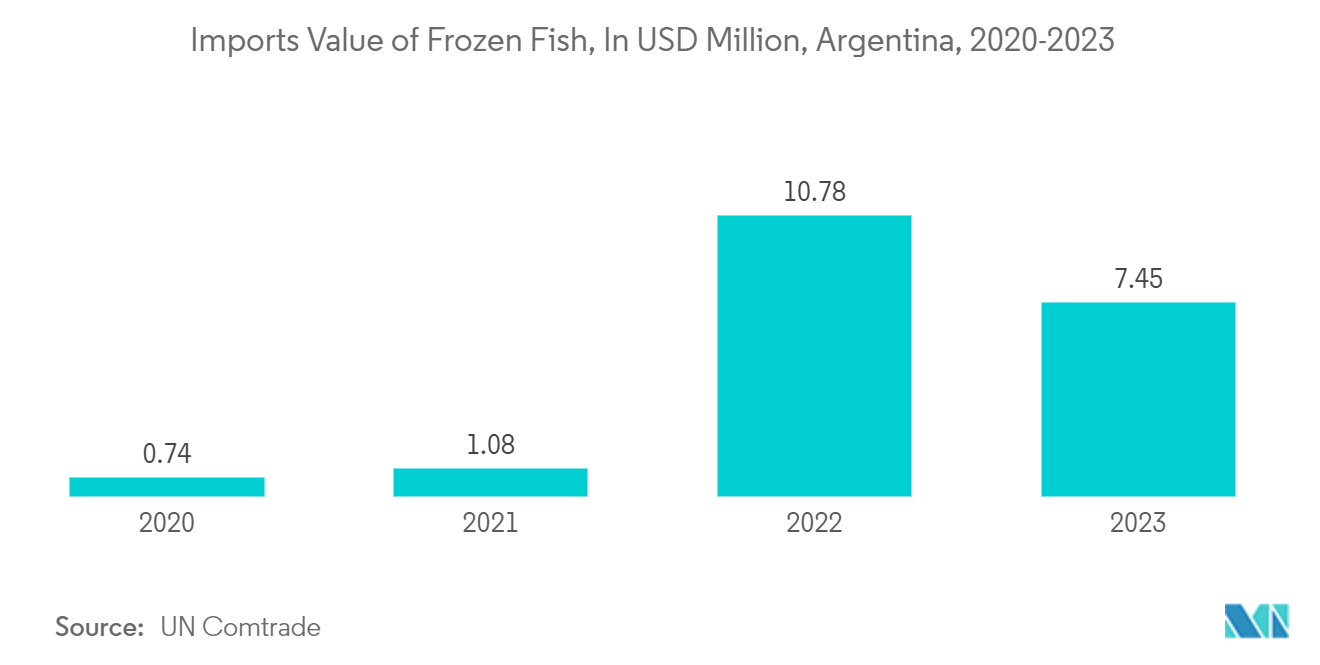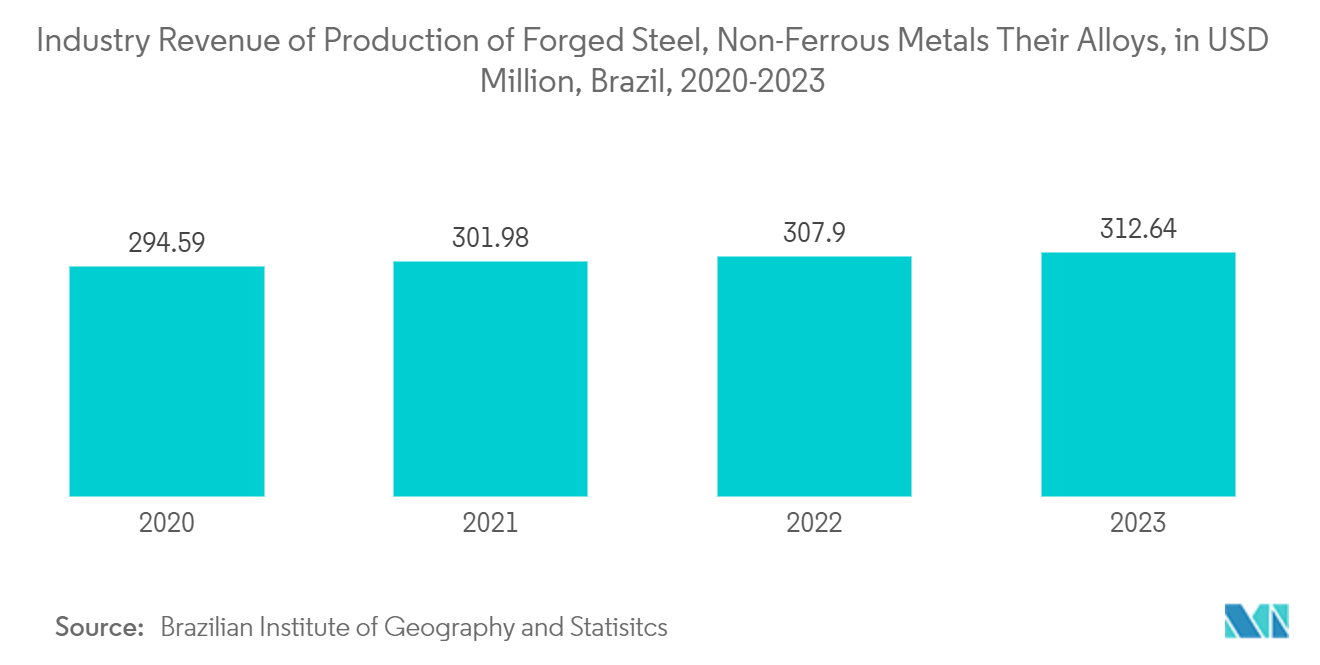Market Trends of Latin America Food Cans Industry
Aluminum is Widely Considered for Packaging
- Aluminum is used in food cans for various benefits. It provides an ideal barrier to protect food against light and air and preserve food quality; it can be recycled, designed according to customer requirements, and produced in different sizes and shapes. In addition, aluminum is a lightweight material, so it positively affects production costs.
- The rising demand for aluminum cans in the food packaging industry, owing to their durable and lightweight properties, is driving the market for aluminum cans in Latin America. The increasing preference for premium packaged food products with good quality is expected to push the demand for aluminum cans in the region. Moreover, the growing demand for canned meat products is anticipated to expand due to their longer shelf life and increased nutritional value.
- In 2023, the government extended its anti-inflationary policy to reduce the high inflation in Mexico. It promulgated a presidential decree to exempt products related to essential family consumption from paying import duties and administrative facilities. The Ministry of Economy published that the import tariffs for steel sheet food packaging have been removed. Such initiatives benefit the companies importing the metal.
- According to the Food and Agriculture Organization of the United Nations (FAO), Latin America's fish and seafood consumption is predicted to increase considerably in the coming years. Latin Americans' lack of time, caused by busy lifestyles, leads them to reach for convenient, quick meals, with processed seafood offering the perfect solution.
- Further, according to UN Comtrade, the import value of frozen fish to Argentina was USD 0.74 million in 2020 and reached USD 7.45 million in 2023. Moreover, as people become more aware that fish and seafood are healthy alternatives to meat and rich in good fats, especially omega-3 fatty acids, the demand for seafood grows. Therefore, increased seafood consumption is expected to push the market for aluminum cans for packaging.

Brazil to Witness Growth in the Industry
- Brazil was one of the prominent countries in aluminum can recycling and the world's third-largest market by volume, as per the Aluminium Stewardship Initiative, as of September 2022. Changing consumer lifestyles has notably driven market growth. According to the Brazilian Institute of Geography and Statistics, the production of steel, non-ferrous metals, and their alloys was valued at USD 294.59 million in 2020, reaching USD 312.64 million in 2023. An increase in steel production can encourage metal manufacturers to develop cans for the food industry.
- The demand for frozen and processed foods has escalated, and they provide a fast and straightforward solution needing nominal composition. In Brazil, consumers can detect broad frozen food commodities involving fruits, vegetables, meat, and ready meals, offering alternatives for speedy and hassle-free meals.
- According to Abralatas, the Brazilian Aluminum Can Manufacturing Association, the Brazilian aluminum industry recycles approximately 400,000 tonnes of cans annually. Newly produced cans from recycled sources reach points of sale within around 60 days, considering all the cycles: production, distribution, consumption, recycling, and manufacture.
- According to a survey by Urbanet, the seven significant cities in Brazil will become even bigger until 2030. Opportunities indicate that the number of residents of Brazil's capital, Brasilia, will grow by about one million within the next decade. São Paulo will encounter the highest growth rate with 200,000 residents annually until 2030. Urbanization would leverage the demand for packaged food, driving the food cans market.
- According to the Food Export Association, the Brazilian retail sector is vital in the food distribution system, capturing about 80% of the food industry. The country has various neighborhood stores, supermarkets, hypermarkets, cash-and-carry, and e-commerce. With modern technologies and higher levels of investment to improve efficiency, the food retail sector has become a crucial segment with intensive competition. Such factors are expected to fuel the food sector's need for metal cans for packaging.


